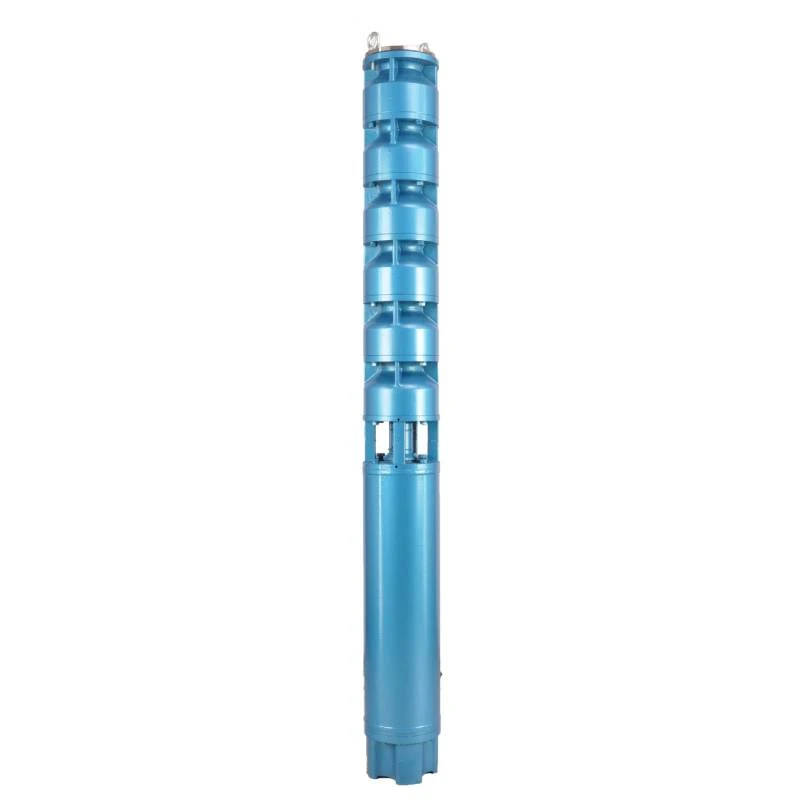Nov . 22, 2024 06:58 Back to list
submersible pump fitting
Understanding Submersible Pump Fittings An Essential Component for Efficient Operation
Submersible pumps are vital tools used in various industries, particularly in water management systems, wastewater treatment, and agricultural irrigation. These pumps are designed to operate when submerged in liquid, which requires meticulous engineering and the effective use of fittings. The fittings of submersible pumps play a pivotal role in ensuring that the pump functions efficiently and safely. In this article, we will explore the significance of submersible pump fittings, types available, and best practices for their installation and maintenance.
What are Submersible Pump Fittings?
Submersible pump fittings are components that connect the pump to the piping system. They ensure a secure and watertight interface, preventing leakage while facilitating the efficient transportation of fluid. Fittings can include flanges, adapters, elbows, tees, and union fittings, each serving specific functions in the overall hydraulic system. Choosing the right type of fitting is critical for the functionality and longevity of the submersible pump.
Types of Submersible Pump Fittings
1. Flanged fittings These fittings feature a flat surface with holes for bolts, allowing for easy and secure attachment to pipes. They are prevalent in large pump installations and provide excellent strength and stability.
2. Threaded fittings Commonly used in smaller installations, threaded fittings screw onto the pump discharge port and piping. They are easy to install but require careful selection of materials to prevent thread wear and leakage.
3. Adapter fittings These fittings allow for the connection of different types of pipes or fittings. They are crucial when integrating a submersible pump into an existing system with varying pipe sizes or materials.
4. Union fittings These fittings enable easy disconnection of the pump from the piping system without cutting or damaging the pipes. This feature is particularly beneficial during maintenance or replacement of the pump.
5. Elbow and tee fittings These types of fittings are essential for changing the direction of the flow in a piping system. Elbows change the flow direction by 90 or 45 degrees, while tees allow for branching off to another pipe.
submersible pump fitting

Importance of Fitting Selection
Selecting the proper fittings for submersible pumps is crucial for several reasons. First, the compatibility of materials is essential; mismatched materials can lead to corrosion or damage over time. For instance, a fitting made of plastic may not withstand the same pressures as a metal fitting. Second, ensuring that the fitting sizes match the pump’s discharge and the piping system is vital for optimal fluid flow and system efficiency. Lastly, considering the environmental conditions—such as temperature and chemical exposure—can influence the longevity and performance of the fittings.
Best Practices for Installation and Maintenance
Proper installation and regular maintenance of submersible pump fittings can significantly enhance the reliability of the entire system. Here are some best practices to follow
1. Check Compatibility Before installation, ensure that all fittings, pipes, and the pump itself are compatible in terms of size and material.
2. Use Thread Sealant For threaded fittings, a quality thread sealant can prevent leaks and ensure a tight seal.
3. Regular Inspections Periodically inspect fittings for signs of wear, corrosion, or damage. Early detection can prevent more severe issues down the line.
4. Follow Manufacturer Guidelines Always refer to the manufacturer’s instructions when installing fittings, as they may have specific recommendations based on the pump’s design.
5. Avoid Over-Tightening When installing fittings, do not over-tighten them, as this can cause damage and lead to leaks.
In conclusion, submersible pump fittings are indispensable in ensuring the efficient and safe operation of submersible pumps. By understanding the types of fittings available, their importance, and how to maintain them properly, users can optimize pump performance and extend its lifespan. Whether in a residential setting or an industrial application, the right fittings make all the difference in the effective management of water and wastewater systems.
-
Submersible Water Pump: The Efficient 'Power Pioneer' of the Underwater World
NewsJul.01,2025
-
Submersible Pond Pump: The Hidden Guardian of Water Landscape Ecology
NewsJul.01,2025
-
Stainless Well Pump: A Reliable and Durable Pumping Main Force
NewsJul.01,2025
-
Stainless Steel Submersible Pump: An Efficient and Versatile Tool for Underwater Operations
NewsJul.01,2025
-
Deep Well Submersible Pump: An Efficient 'Sucker' of Groundwater Sources
NewsJul.01,2025
-
Deep Water Well Pump: An Efficient 'Sucker' of Groundwater Sources
NewsJul.01,2025
-
 Submersible Water Pump: The Efficient 'Power Pioneer' of the Underwater WorldIn the field of hydraulic equipment, the Submersible Water Pump has become the core equipment for underwater operations and water resource transportation due to its unique design and excellent performance.Detail
Submersible Water Pump: The Efficient 'Power Pioneer' of the Underwater WorldIn the field of hydraulic equipment, the Submersible Water Pump has become the core equipment for underwater operations and water resource transportation due to its unique design and excellent performance.Detail -
 Submersible Pond Pump: The Hidden Guardian of Water Landscape EcologyIn courtyard landscapes, ecological ponds, and even small-scale water conservancy projects, there is a silent yet indispensable equipment - the Submersible Pond Pump.Detail
Submersible Pond Pump: The Hidden Guardian of Water Landscape EcologyIn courtyard landscapes, ecological ponds, and even small-scale water conservancy projects, there is a silent yet indispensable equipment - the Submersible Pond Pump.Detail -
 Stainless Well Pump: A Reliable and Durable Pumping Main ForceIn the field of water resource transportation, Stainless Well Pump has become the core equipment for various pumping scenarios with its excellent performance and reliable quality.Detail
Stainless Well Pump: A Reliable and Durable Pumping Main ForceIn the field of water resource transportation, Stainless Well Pump has become the core equipment for various pumping scenarios with its excellent performance and reliable quality.Detail
